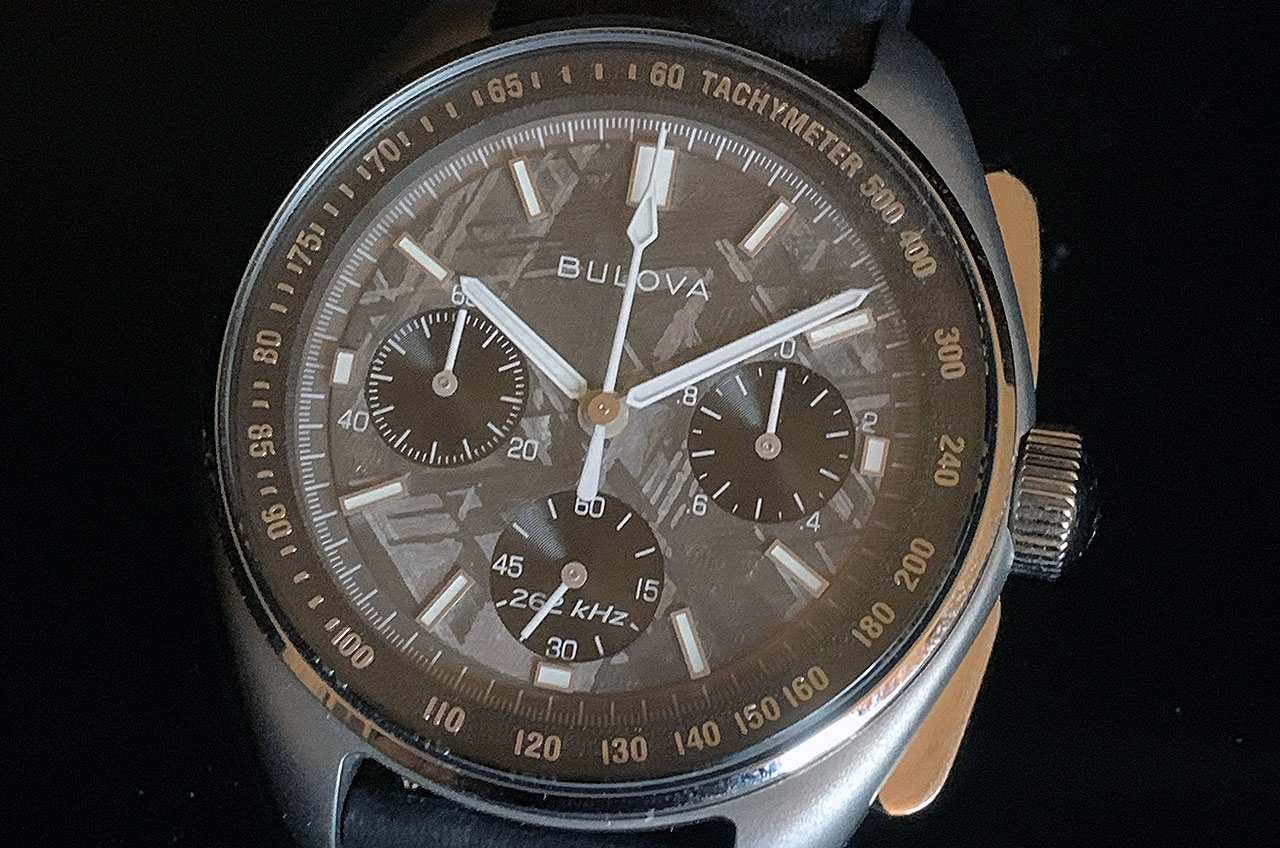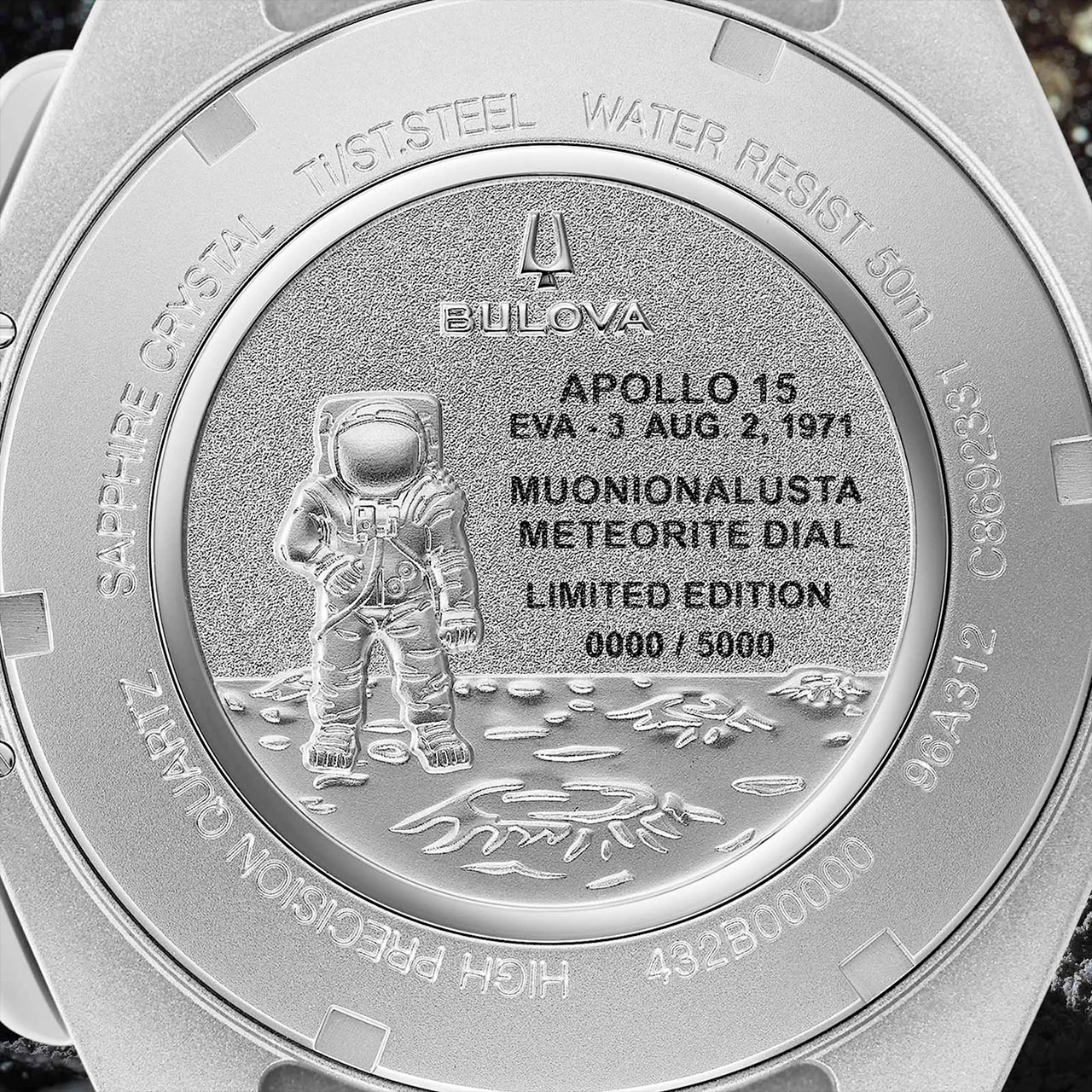Bulova adds limited edition meteorite dial to Apollo 15-inspired Lunar Pilot watch
'To be able to integrate space materials into the watch brings a fresh perspective to the original design.'

How do you enhance the connection that a watch shares with outer space beyond just evoking its history of having been flown to the moon? You replicate the look of the original, but replace its dial with a space rock.
Bulova is celebrating its long history with NASA and the U.S. space program by releasing its new Meteorite Lunar Pilot timepiece. The $1,495 limited edition wristwatch, part of Bulova's growing Archive Series, is the latest reproduction of a prototype chronograph that was secretly flown to the moon.
In 1971, Bulova arranged for one of its chronographs (and a stopwatch) to fly to the moon with the Apollo 15 crew. Though it was never supposed to see the lunar surface, an accident with one of NASA's official timepieces led to the commander of the mission wearing the prototype out on the third of his three moonwalks.
Forty-four years later, former NASA astronaut David Scott auctioned the watch for a then-record-setting $1.625 million. A month after the sale, Bulova introduced its first production replica of the Apollo 15 watch, which it called the "Lunar Pilot." Since then, the American watchmaker has released a few different versions of the Lunar Pilot, including a 2021 golden version in honor of the 50th anniversary of the Apollo 15 mission.
Related: The Apollo Program: How NASA sent astronauts to the moon
Now Bulova is back with the Meteorite Lunar Pilot, a watch identical in size (43.5 mm) to the one Scott used on the moon, but with a two-tone dial fabricated from the oldest type of meteorite known to exist, the Muonionahusta meteorite, which scientists estimate to be 4.5 billion years old. Collected in Northern Scandinavia in 1906, the meteorite used for the watch was sliced to form the dial and reveal the crystalline or Widmanstätten patterns that form over millions of years of very slow cooling.
"There is no denying the success of the Lunar Pilot and the genuine story behind such an incredible timepiece," said Jeffrey Cohen, president of Citizens Watches America, in a statement."To be able to integrate space materials into the watch brings a fresh perspective to the original design."
Recessed into the meteorite dial are three circular grooved sub-dials, including a 1/20 chronograph seconds counter at 3 o'clock; running seconds with a sweep hand at 6 o'clock; and a 60-minute chronograph counter at 9 o'clock.
The 2024 Meteorite Lunar Pilot is also outfitted with Bulova's NP20 High Precision Quartz (HPQ) chronograph movement and comes with a black leather strap, a stamped and dimensional tachymeter scale on the dial, Super Luminous hands and a 165-foot (50-meter) water resistant case back featuring a lunar relief design.
Limited to 5,000 pieces, each Meteorite Lunar Pilot is individually numbered and includes a storybook, a dark wood gift box and a Bulova certificate of authenticity.
Follow collectSPACE.com on Facebook and on Twitter at @collectSPACE. Copyright 2024 collectSPACE.com. All rights reserved.
Breaking space news, the latest updates on rocket launches, skywatching events and more!

Robert Pearlman is a space historian, journalist and the founder and editor of collectSPACE.com, a daily news publication and community devoted to space history with a particular focus on how and where space exploration intersects with pop culture. Pearlman is also a contributing writer for Space.com and co-author of "Space Stations: The Art, Science, and Reality of Working in Space” published by Smithsonian Books in 2018.
In 2009, he was inducted into the U.S. Space Camp Hall of Fame in Huntsville, Alabama. In 2021, he was honored by the American Astronautical Society with the Ordway Award for Sustained Excellence in Spaceflight History. In 2023, the National Space Club Florida Committee recognized Pearlman with the Kolcum News and Communications Award for excellence in telling the space story along the Space Coast and throughout the world.



